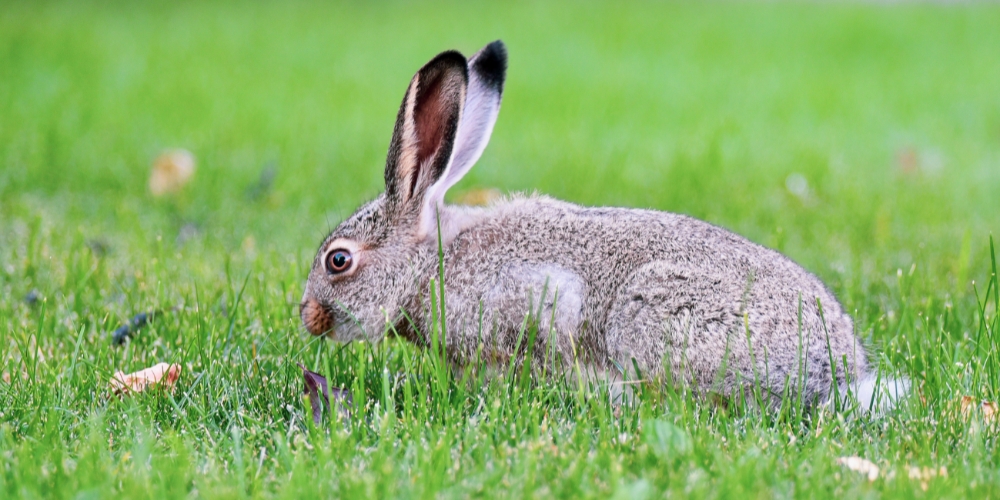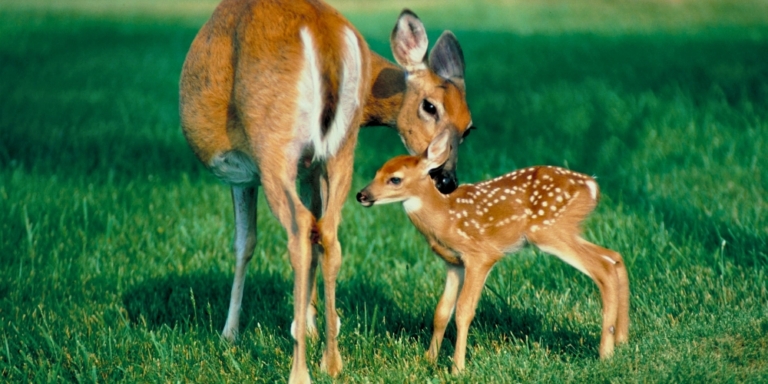White-tailed jackrabbits are known for many things, especially their speed.

Everything these animals do is fast, including the rate at which they breed.
Yet, the population of jackrabbits has declined considerably since 1950.
Why is this? Road kills, hunting, diseases, and parasites are the usual suspects.
But these causes can’t explain such a large population decline.
According to a study in the Journal of Fish and Wildlife Management, habitat loss and climate change are the main culprits.
More than 80 percent of Canada’s Prairie grasslands have been lost due to oil and gas development, farming, extreme weather, and more.
Researchers generally agree that it is the loss of grassland habitat that has caused jackrabbit populations to decline across North America.
But our province’s jackrabbits aren’t so easily discouraged; they’ll take advantage of any suitable slice of habitat no matter where they are located.
A recent study published in Nature Ecology and Evolution found that, as the climate warms, Edmonton will be more liveable for animals like jackrabbits.
The study explains that Edmonton will be more habitable for animals due to its geography and wildlife-friendly city planning.
Rural Rabbits Relocating to the Richness of the City
There’s proof in the pudding. The jackrabbit population in Edmonton is already booming despite a decline everywhere else. The jackrabbit population in our capital is 80 times more dense than rural rabbits.
There were around 3,000 jackrabbits in Edmonton in 2016, but that number has grown yearly.
If jackrabbits are traditionally found in grassland environments, why are they moving to the city?
That’s the question Darcy Visscher and his research team are trying to answer.


Visscher is an associate professor of biology at King’s University. His research team received $100,000 from Canada’s Natural Sciences and Engineering Research Council to study the phenomenon.
The team has also received money from the Alberta Conservation Association and Parks Canada’s Urban Parks Initiative.
“I worked on this project as an undergrad. It was one of the experiences I had at King’s that made me decide to further pursue ecology. Now it’s come full circle, and I’m the one taking students to work on the rabbit project,” said Visscher in a release.
The team has been tasked with tagging around 20 jackrabbits with GPS trackers to understand better where these critters are coming from and why they fancy city living.
The GPS tags will track the jackrabbits’ location every 15 minutes to give researchers a glimpse into the lives and activities of jackrabbits in Edmonton.
Visscher’s work will investigate how human activity influences how the rabbits use natural spaces.
He believes jackrabbits in Edmonton have become used to living alongside humans but are still more active when humans aren’t around, like at night.
“They’re very habitual, and they’re returning to particular locations to sleep during the day, and I expect that sometimes they will be bumped from those locations,” Visscher told CBC News.
Visscher hopes to start tracking jackrabbits in the city over the Christmas break.
An Edmonton filled with frolicking jackrabbits sounds great, but these jumpy critters should be in their natural habitat, and that’s where we need to work hard to protect and restore natural grasslands across the province.






